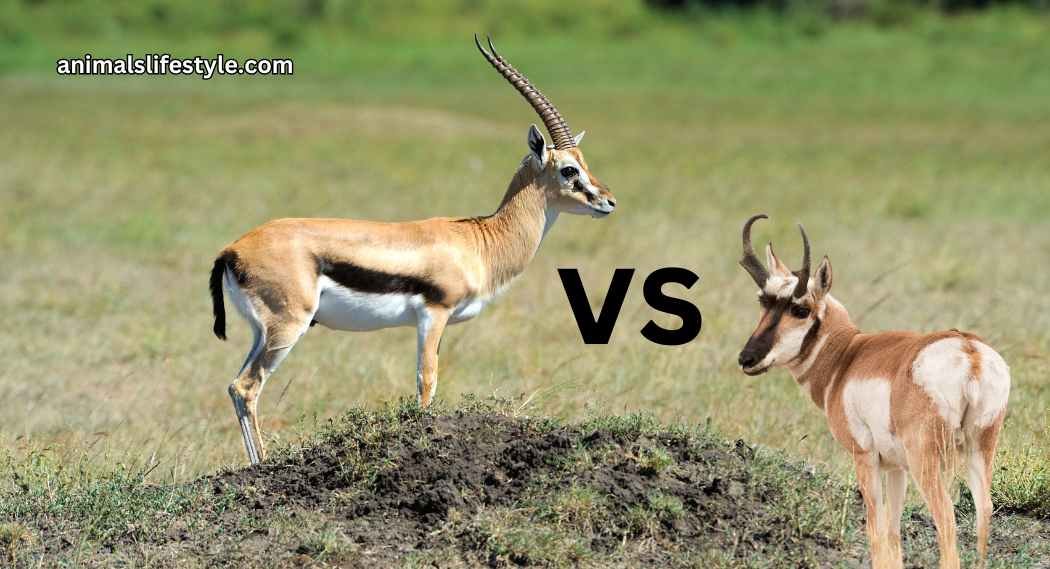Gazelle Deer Overview
Gazelle deer are graceful and swift creatures found primarily in Africa and parts of Asia. Known for their slender bodies, long legs, and impressive agility, these animals are a sight to behold in the wild. Gazelles belong to the genus Gazella and are part of the Bovidae family, which also includes antelopes, cattle, goats, and sheep. These animals are adapted to life in open, arid regions, where they rely on their speed to escape predators. Gazelles are herbivores, feeding mainly on grasses and leaves, and they are an essential part of the ecosystem, maintaining the balance by grazing.
The lifespan of a gazelle varies between 10 to 15 years in the wild, though they can live longer in captivity. These animals typically weigh between 20 to 75 kilograms and can reach lengths of up to 170 centimeters. Their scientific name is Gazella gazella. Gazelles have a unique escape strategy called stotting or pronking, where they leap into the air with all four feet simultaneously. Their skin is usually tan or reddish-brown with white underbellies and distinctive markings on their faces and flanks. Though generally not aggressive, gazelles can defend themselves by using their sharp horns when threatened.
Gazelle vs Deer
- Family: Gazelles belong to the Bovidae family, while deer are part of the Cervidae family.
- Horns vs. Antlers: Gazelles have permanent horns, whereas deer have antlers that are shed and regrown annually.
- Habitat: Gazelles are primarily found in Africa and Asia, while deer are more widespread, inhabiting various regions including North America and Europe.
- Size: Deer are generally larger than gazelles.
- Speed: Gazelles are faster and more agile, capable of reaching speeds up to 97 km/h (60 mph).
- Diet: Both are herbivores, but gazelles prefer grasses and leaves, whereas deer have a more varied diet including fruits, nuts, and twigs.
- Behavior: Gazelles are more likely to live in open plains, while deer often inhabit forested areas.
- Social Structure: Gazelles tend to form smaller herds compared to the larger groups seen in some deer species.
- Predation: Gazelles rely more on speed to escape predators, while deer often use hiding and camouflage.
- Physical Appearance: Gazelles have a more streamlined body shape, aiding in their high-speed escapes, whereas deer have a bulkier build.
Thomson’s Gazelle Deer
Thomson’s gazelle (Eudorcas thomsonii) is one of the most well-known and studied species of gazelle. Named after the Scottish explorer Joseph Thomson, these gazelles are recognized for their striking black side stripe that runs from the shoulder to the hip. They inhabit the savannas and grasslands of East Africa, particularly in Kenya and Tanzania. Thomson’s gazelles are smaller compared to other gazelle species, with a height of about 60 to 90 centimeters at the shoulder and a weight ranging from 15 to 30 kilograms.
Thomson’s gazelles are incredibly agile and fast, capable of running at speeds up to 80 km/h (50 mph). Their diet mainly consists of short grasses, making them important grazers in their ecosystems. These gazelles are known for their distinctive stotting behavior, which is thought to communicate alertness and fitness to predators and other gazelles. Despite their small size, they are resilient animals, adept at surviving in harsh conditions with limited water availability. read about the pangoline
Gazelle vs Antelope
Differences Between Gazelle and Antelope
| Aspect | Gazelle | Antelope |
|---|---|---|
| Species Classification | A subset of the antelope family | Includes various species such as elands, oryx, and impalas |
| Size | Generally smaller and more slender | Can range from small to very large, more robust |
| Horns | Typically thinner, more curved horns | Variety of horn shapes and sizes |
| Habitat | Open plains and savannas | Diverse habitats including forests, deserts, and grasslands |
| Speed | Among the fastest, capable of running up to 60 mph | Varies by species, generally slower than gazelles |
| Social Behavior | Smaller, more cohesive groups | Can form larger herds or be more solitary depending on species |
| Diet | Primarily grazers | More diverse diets, including browsing on leaves and shrubs |
| Adaptations | Adapted to drier climates, extracting moisture from food | Adaptations vary by species, suited to wetter or wooded environments |
| Physical Appearance | Delicate, streamlined appearance | Robust and varied builds |
| Behavioral Traits | Known for stotting (high-jumping) when threatened | Different behavioral traits, less common to stot |
Frequently Questions and Answers
- Is a gazelle a deer?
A: No, a gazelle is not a deer. While they share some similarities, they belong to different families within the order Artiodactyla. - Is a gazelle a goat or deer?
A: A gazelle is neither a goat nor a deer. It is a type of antelope. - What is the gazelle also known as in India?
A: In India, the gazelle is often referred to as “chinkara.” - How fast can a gazelle run?
A: Some species of gazelles can run up to 60 mph. - What do gazelles eat?
A: Gazelles primarily eat grasses, leaves, and shoots. - How long do gazelles live?
A: Gazelles typically live for about 10 to 12 years in the wild. - Where are gazelles commonly found?
A: Gazelles are commonly found in Africa and Asia, particularly in open plains and savannas. - Do gazelles have antlers or horns?
A: Gazelles have permanent horns, unlike deer which have antlers that they shed annually. - Are gazelles endangered?
A: Some species of gazelles are endangered due to habitat loss and hunting. - Can gazelles survive without water?
A: Gazelles can survive in arid environments by extracting moisture from their food, but they still need water to survive.
- Is a gazelle a deer?


